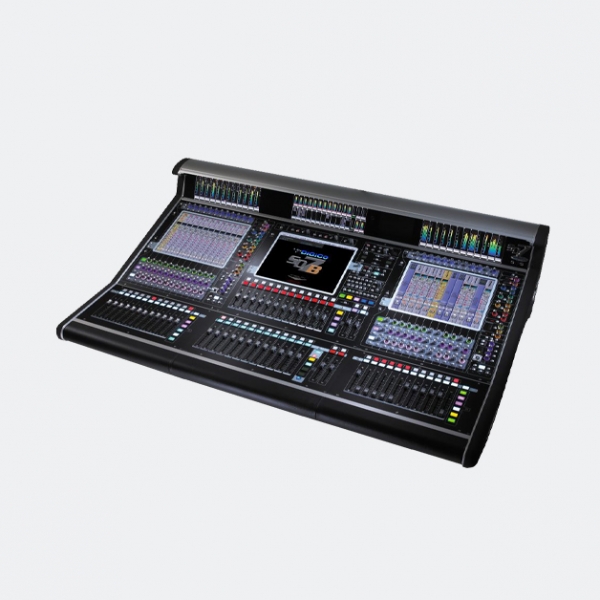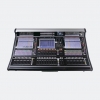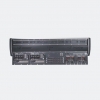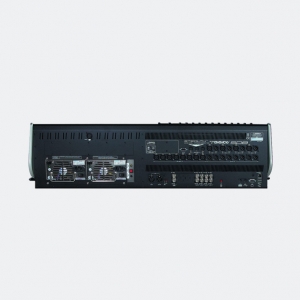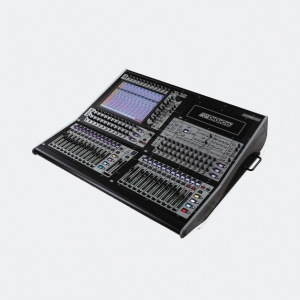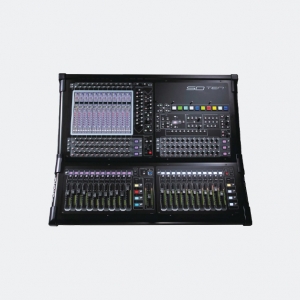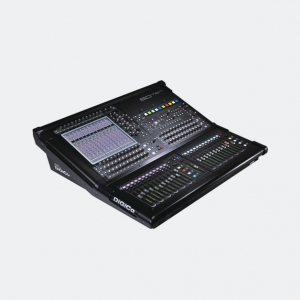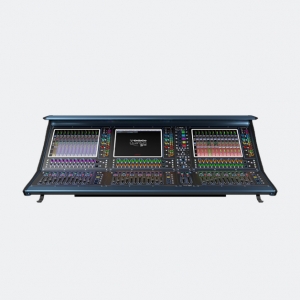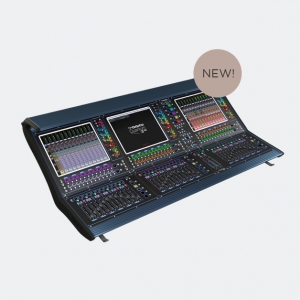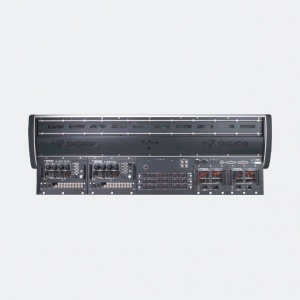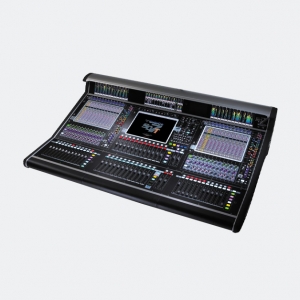Description
DiGiCo SD7B : Mind-blowing I/O for Broadcast
The console that gives you everything you could ask for and more, the DiGiCo SD7B combines the power of Stealth Digital Processing and Super FPGA technology with a benchmark line-up of features for the broadcast environment.
Boasting full Flexi channel capability and vastly increased routing flexibility for LCRS and 5.1 mixes, the SD7B is more than a match for the most challenging of broadcast applications. Features include a complete 5.1 monitor matrix with 48×6 source-to-speaker selection; multi-channel folding; user-defined stem order selection; Mix Minus busses (one per mono channel); backstop PFL (over press) and Auto PFL; and Audio Follow Video implementation.
All of that power sits beneath your fingertips when you sit before the iconic SD7B work surface, equipped with three touchscreens, each accommodating a bank of 12 faders, plus 16 assignable faders in the centre. The resulting workflow is as innovative as it is intuitive and practical, with HD meter bridges and colour-coded knobs to ensure at-a-glance operation. You can even choose to expand your fader count with the DiGiCo EX-007 Fader Expansion Unit, while two EX-007s can be connected via Cat5e for either remote control or an expanded fader-count of 100.
Under The Hood
With a massive 256 processing paths at 48kHz/96kHz, the SD7B is the Einstein of digital mixing platforms.
Standard channel processing, whether inputs or outputs, includes Channel Delay, DiGiTuBe, Single and Multi-Channel Presets, Hi- and Lo-pass filters @ 24dB/octave, four-band parametric EQ (eight on outputs) with band curve selection and Dynamic EQ on each band, Dual insert points, and DiGiCo’s DYN 1 (Compressor, De-esser or Multiband Compressor) and DYN 2 (Gate, Compressor or Ducker).
Incorporated within the master section are 32 gangable 32-band graphic EQs, 48 stereo effects, and 36 control groups (VCAs). Using snapshots, engineers can switch between complete configurations in any live environment at the press of a button – during rehearsals, setup or even during a show.
In addition, the SD7B’s 128 busses can be assigned as mono/stereo groups or auxiliary busses, while further configurability is available courtesy of a 32 x 32 output matrix , dual solo busses, and a Master buss. Unlike all other digital console manufacturers, you don’t lose Aux or Group Busses when using the Matrix as they are in addition, including the Master buss.
I/O
The SD7B is renowned for its heavyweight I/O, and with good reason in the shape of 12 analogue inputs, 12 analogue outputs and 12 AES I/O (mono). With the second engine you benefit from four redundant MADI ports per engine, and one Optocore loop, as standard. This equates to an incredible 1,392 I/O connections on a single optic loop with just one work surface.
Get instant access to 32 fully integrated low-latency Waves stereo MultiRacks, each with up to eight plug-ins per rack, by fitting an optional DiGiCo SoundGrid module linked to external SoundGrid or DiGiGrid servers, giving a total of 128 additional I/O.
